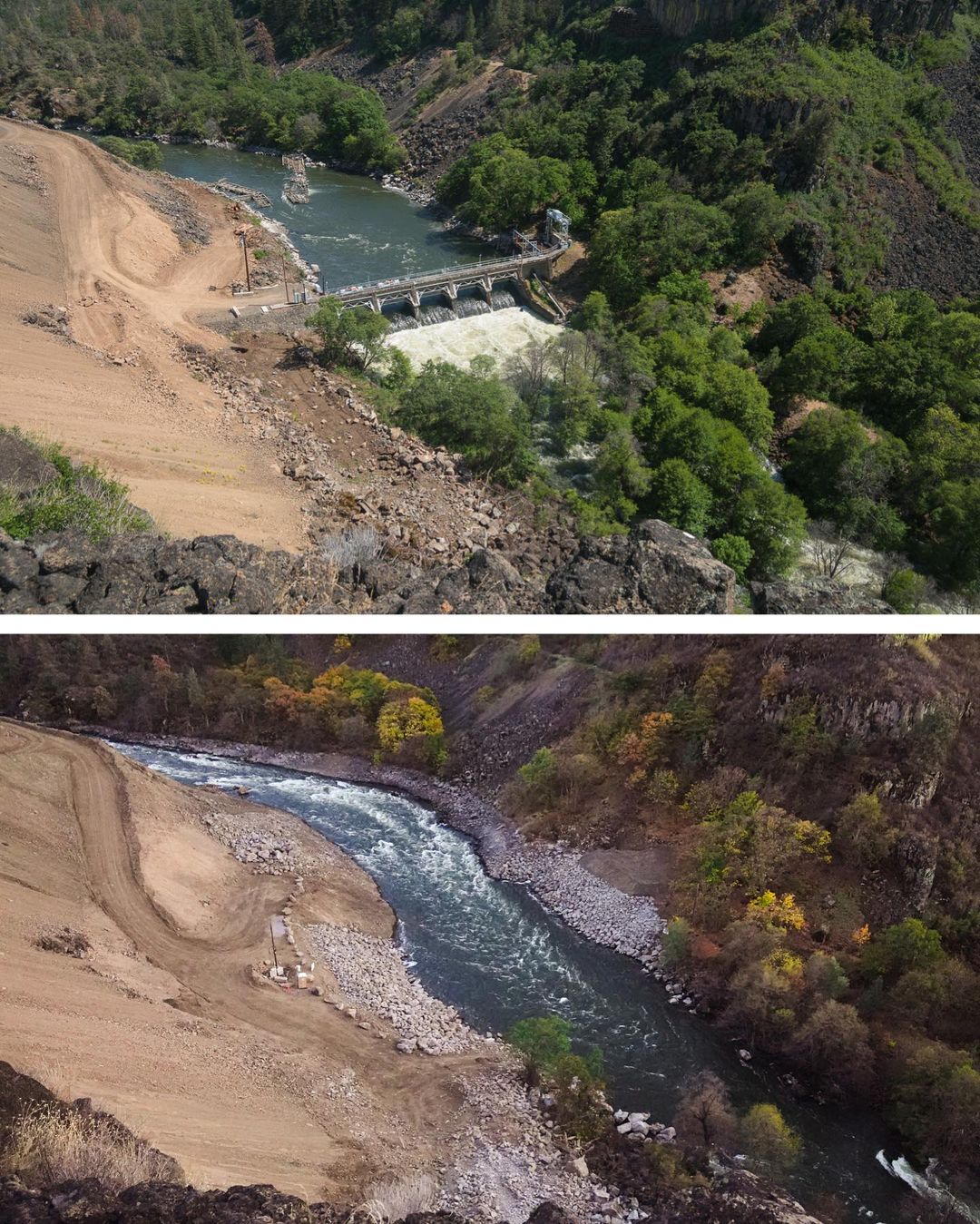This week marked the removal of the last remnants of four large hydropower dams on the lower Klamath River. On the occasion of the community celebration taking place on October 5 in Yreka, California, International Rivers extends its heartfelt congratulations to the many groups that worked together to make this happen.
The decades-long struggle to remove the dams on the Klamath stands as a major success, restoring hundreds of miles of habitat for salmon and other species which have been severely affected by the dams. The dams also devastated the cultures, lives and livelihoods of the Indigenous tribes whose territories and way of life are intimately bound to the Klamath. This Tribal-led victory, supported by a strong coalition of key local, national and international allies and campaign groups, serves as an inspiration to dam-affected communities around the world, who have seen what Indigenous Peoples and their allies can accomplish in the face of daunting odds and powerful vested interests.
This success comes on the heels of the growing trend in Europe and North America to dismantle obsolete dams. However, the Klamath River stands out as the site of the largest dam removal project in history and as a demonstration of how the decommissioning of even major dams can be accomplished.
While there remains much to do to dismantle the thousands of obsolete dams in Europe and North America, the Klamath removals have sparked a conversation in Latin America, Africa, and Asia about what to do with their aging dam fleets. This is particularly true since the Derna dam disaster in Libya last year exposed the risks that aging dams face in an era of extreme weather caused by climate change.
Meanwhile, we have witnessed a major milestone when the International Renewable Energy Agency (IRENA) found that global solar energy capacity eclipsed hydropower as the largest renewable energy source in the world in 2023, as new hydropower continues to shrink year on year. Before long, we will see more dams coming down than going up.
The Klamath dam removal represents hope for rivers and the triumph of Indigenous communities in their efforts to wrest control of their freshwater resources. It also serves as a cautionary tale and reminder of the unintended consequences–for people, fish and the wider environment–of flawed and poorly conceived hydropower projects. Most of the thousands of large dams currently being considered around the world suffer from the same flaws and negative consequences that finally led to the removal of the Klamath dams. These ill-conceived projects should be consigned to the past.
###
Featured images of the Copco No. 2 before after removal, credit Shane Anderson of Swiftwater Films.

